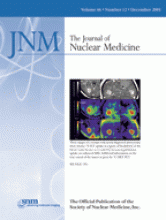Cardiovascular Magnetic Resonance
E. Nagel, A.C. van Rossum, and E. Fleck, eds.
New York, NY: Springer, 2004, 302 pages, $129
Atlas of Practical Applications of Cardiovascular Magnetic Resonance
G. Pons-Lladó and F. Carreras, eds.
New York, NY: Springer, 2005, 154 pages, $129
Cardiovascular magnetic resonance (CMR) is no longer just another promising imaging modality. It has arrived in technical, professional, and political terms and is experiencing growing acceptance in medical practice. The first-pass stress, perfusion, wall motion, and delayed enhancement of contrast-enhanced MRI are now considered comprehensive approaches rather than separate tests. The prognostic power of delayed contrast enhancement extends beyond its well-established ability to predict whether the heart attack patient may benefit from revascularization. The major advantage of CMR over other techniques is the ability to reveal morphology and function in a single examination and thus answer complex questions about cardiovascular problems. The rapid advancement of multislice CT for cardiac workups cannot be ignored, and 64-slice CT seems to be moving ahead of coronary MRI. MR angiography may be used as a problem-solving tool in myocardial segments with extensive calcifications. The ability of CMR to produce exquisite cardiac images without exposing patients to ionizing radiation remains appealing, because multislice-CT studies expose patients to twice as much radiation as does fluoroscopic cardiac catheterization. The higher field strength appears to produce no better than equivalent results for the diagnosis of coronary arterial disease.
The book Cardiovascular Magnetic Resonance is intended to facilitate accustomation to this developing complex field, better define the indications for CMR, and support the daily practice of scanning and case reviewing. The book is divided into 3 parts: The first covers the basics of CMR, with chapters on physical principles, pulse sequences, contrast agents, angiography methods, flow measurements, motion suppression, and practical handling. The second covers clinical applications of CMR, with chapters on anatomic planning, indications, ventricular function, myocardial tagging, valvular function, congenital heart disease and cardiomyopathies, cardiac tumors, myocarditis, aortic angiography, peripheral angiography, dobutamine MRI, pathophysiology and quantification of myocardial perfusion, myocardial infarction and viability, flow measurement, and coronary artery imaging. The third covers future development, with chapters about atherosclerosis and molecular imaging, MR spectroscopy, MRI-guided interventions, and contrast agents. This book is bound well and printed on good-quality paper with good illustrations. It is written clearly and concisely and includes references as recent as 2003.
This book is accompanied by a CD-ROM that contains additional examples of images, such as cine loops and color images. PDF files of practical issues such as practice recommendations are also stored on the CD for printing and daily use. I highly recommend this book to cardiologists, radiologists, nuclear cardiovascular physicians, and technical assistants.
Atlas of Practical Applications of Cardiovascular Magnetic Resonance is a revised second edition published 6 y after the first to meet the request of clinicians for an update on developments in CMR. Most of the authors are clinical cardiologists in the field of cardiac imaging. Of the 8 chapters of the book, the first covers the basics of CMR and normal views; the second, ventricular morphology, function, and cardiomyopathies; the third, CMR techniques and cases of aortic diseases; the fourth, valvular heart diseases; the fifth, ischemic heart diseases; the sixth, cardiac and paracardiac masses; the seventh, pericardial diseases; and the eighth, cases of congenital heart diseases.
This book is easy to read and understand. It is bound well and printed on good-quality paper. Illustrations are generally optimal, and references are as recent as 2004. This book also includes a CD-ROM with cine loops and a glossary of terms that should be useful to beginners.
This atlas will assist cardiologists in determine whether a CMR study is helpful and also provide details on how to plan and read CMR studies. I also recommend this atlas to radiologists who are interpreting cardiovascular images and to nuclear cardiovascular physicians.







